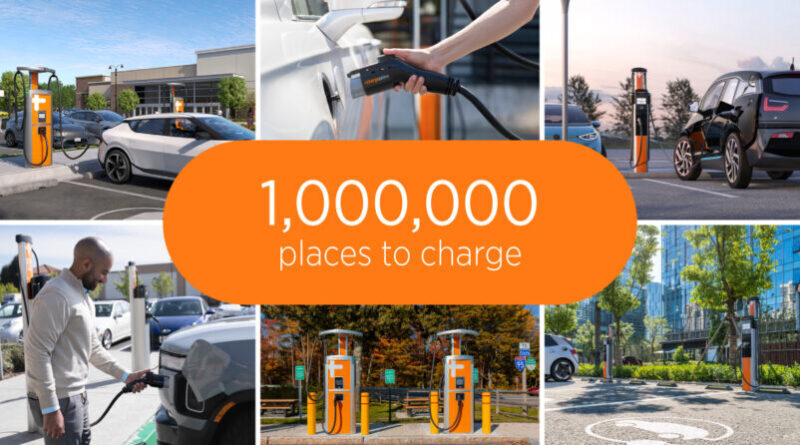Solving The Tech Energy Puzzle – Is Bypassing the Grid the Ultimate Hack?
The Energy Crunch of Tech Giants and Why Hydrogen Could Hold the Key The tech world’s relentless growth has fueled…

The Energy Crunch of Tech Giants and Why Hydrogen Could Hold the Key
The tech world’s relentless growth has fueled both innovation and a race for energy. With cloud computing, artificial intelligence, and streaming services becoming integral to modern life, tech giants like Amazon, Microsoft, and Google are consuming massive amounts of electricity. But meeting these energy needs isn’t as simple as flipping a switch, especially with the electric grid showing signs of strain.
To side-step the congestion and delays of hooking into the grid, some companies are exploring direct power connections to nearby plants. One headline-grabbing example is Amazon Web Services’ (AWS) data center project next to Susquehanna nuclear plant in Pennsylvania. This partnership, termed a “behind-the-meter” connection, lets AWS bypass the grid entirely and plug directly into the plant’s power supply. While this approach may seem like an elegant solution, it’s raising ethical and financial questions—and a potential opportunity for hydrogen to shine.
The Growing Appetite for Power in the Tech Sector
Powering a single data center is no small feat. These facilities contain servers, cooling systems, and networking equipment that run 24/7. The demands are only increasing as artificial intelligence and machine learning boost the need for computing power. According to the Data Center Coalition, building a data center takes a few years, but hooking it into an overloaded grid could take far longer—years of delays that no tech company can afford.
Under such pressure, AWS and other companies are seeking alternatives. Plugging directly into nuclear or natural gas plants allows them to cut years off development timelines and secure a reliable stream of energy. For AWS, this approach aligns with its mission of reducing greenhouse gas emissions by sourcing power from cleaner energy options like nuclear. But what happens to the rest of the grid when big corporations bypass it? And beyond discussing the fairness, is there a better way to solve the energy equation?
Why Critics Are Raising Concerns About Direct Connections
The AWS-Susquehanna deal, which the Federal Energy Regulatory Commission (FERC) recently rejected on procedural grounds, serves as a bellwether. Critics argue that allowing private deals like this could put the rest of us at a disadvantage. Power plants might choose to sell energy to higher-paying corporate customers, potentially driving up prices for homes and small businesses.
There’s also pushback from traditional energy utilities, which earn revenue by building transmission lines and maintaining grid infrastructure. Without broader grid participation, companies like AWS skip paying costs that other consumers cover, which some argue amounts to freeloading. On top of that, taxpayer dollars often contribute to subsidies for power plants, including nuclear, which complicates the fairness of private off-grid deals.
Despite these concerns, there’s no arguing that energy needs are evolving faster than the grid is being modernized. This is where hydrogen enters the conversation as an innovative alternative.
Could Hydrogen Bridge the Gap?
Instead of relying solely on nuclear power or placing enormous demands on an already strained grid, onsite hydrogen production offers a promising and practical solution. For data centers and other high-energy facilities, generating hydrogen directly where it’s needed provides a localized, sustainable, and reliable energy alternative.
Onsite hydrogen production allows facilities to produce energy right at the source, removing the logistical hurdles of relying on external providers or long-distance transmission networks. By using hydrogen electrolyzers powered by renewable energy, data centers can generate clean hydrogen on location, ensuring a steady, emission-free power supply. This approach aligns perfectly with the sustainability goals of tech companies like Amazon and Google, which prioritize reducing their carbon footprints.
But it’s not just about being green — onsite hydrogen production is also incredibly reliable. Hydrogen can be stored for long periods, meaning facilities won’t have to worry about disruptions in energy supply due to grid outages or renewable energy fluctuations. For data centers, where even a second of downtime can equate to significant financial losses, this reliability is invaluable.
Another key advantage lies in cost and infrastructure savings. Onsite production eliminates the need for sprawling hydrogen pipelines or expensive transportation logistics. It also bypasses the complicated and time-consuming process of connecting to the traditional grid. Facilities can operate independently, producing their own energy and avoiding the delays associated with traditional grid upgrades or expansions.
Onsite hydrogen production also paves the way for greater energy autonomy. Facilities can scale production up or down depending on their needs, making it a highly adaptable solution. And for those looking to future-proof their operations, onsite hydrogen systems can integrate with renewable energy sources like solar or wind to create a hybrid energy model that’s both resilient and efficient.
The Path Forward
While regulators like FERC continue to debate how to manage direct power deals, the urgency to solve the energy crisis grows. It’s clear that data centers, eager to launch fast and sustainably, can’t wait for the bureaucracy to catch up. On the flip side, allowing private energy deals without oversight risks leaving ordinary consumers with higher prices and fewer options.
Hydrogen offers a middle ground worth exploring. By building hydrogen infrastructures alongside traditional energy systems, or investing in containerized onsite hydrogen production systems like Bloom Energy’s solid oxide electrolyzers, facilities can achieve a reliable and sustainable energy supply.
Estimates suggest that widespread hydrogen adoption might take a decade or more, but small-scale pilots could start addressing today’s challenges right now.
Think of a local hydrogen power hub supplying electricity to a tech company, while also supporting nearby homes and businesses when needed. This creates a collaborative energy ecosystem instead of a competitive one. Implementation could start with heavily industrialized regions where the demand for energy already justifies the cost of upgrading facilities to handle hydrogen.
A Shared Energy Future
At its heart, this energy challenge isn’t just about tech giants or power plant operators. It’s about how we, as a society, allocate and balance resources in times of extraordinary change. While direct power deals like AWS and Susquehanna’s agreement might offer a quick fix for corporations, they’re not a sustainable long-term solution for everyone.
What's Your Reaction?





























































